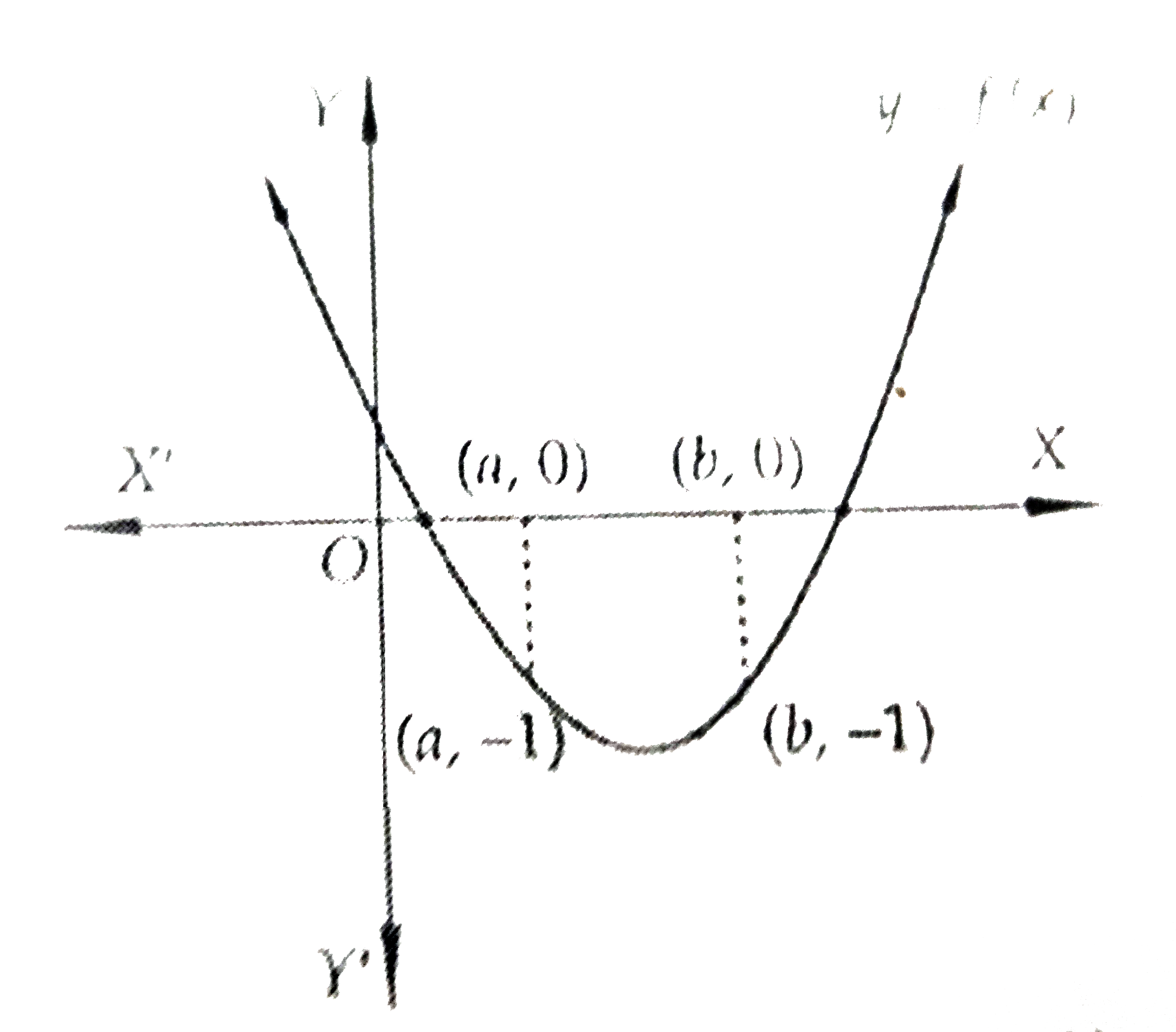If b>a, then the equation (x−a)(x−b)−1=0 has
(a) Both roots in (a,b) (b) Both roots in (−∞,a)
(c) Both roots in (b,+∞) (d) One root in (−∞,a) and the other in (b,+∞)
both roots in [a, b]
both roots in (−∞,a]
both roots in (b,∞)
one roots in (−∞,a) and other in (b,∞)
The correct Answer is:D
Let f(x)=(x−a)(x−b)−1.
We observe that the coefficient of x2 in f(x) is positive and f(a)=f(b)=−1. Thus, the graph of f(x) is as shown in Fig 18.

It is evident from the graph that one of the roots of f(x) = 0 lies in (−∞,a) and the other lies in (b,∞).
Hence, option (d) is correct.
Topper's Solved these Questions
- QUADRATIC EXPRESSIONS AND EQUATIONS BOOK - OBJECTIVE RD SHARMA ENGLISHCHAPTER - QUADRATIC EXPRESSIONS AND EQUATIONS EXERCISE - Section II - Assertion Reason Type
22 Videos
- QUADRATIC EXPRESSIONS AND EQUATIONS BOOK - OBJECTIVE RD SHARMA ENGLISHCHAPTER - QUADRATIC EXPRESSIONS AND EQUATIONS EXERCISE - Exercise
138 Videos
- QUADRATIC EXPRESSIONS AND EQUATIONS BOOK - OBJECTIVE RD SHARMA ENGLISHCHAPTER - QUADRATIC EXPRESSIONS AND EQUATIONS EXERCISE - Chapter Test
50 Videos
- PROBABILITY BOOK - OBJECTIVE RD SHARMA ENGLISHCHAPTER - PROBABILITY EXERCISE - Chapter Test
45 Videos
- SEQUENCES AND SERIESBOOK - OBJECTIVE RD SHARMA ENGLISHCHAPTER - SEQUENCES AND SERIESEXERCISE - Chapter Test
59 Videos
Similar Questions
If b>a then show that the equation (x−a)(x−b)−1=0 has one root less than a and other root greater than b.
View SolutionIf 0<α<π4 equation (x−sinα)(x−cosα)−2=0 has (A) both roots in (sinα,cosα) (B) both roots in (cosα,sinα) (C) one root in (−∞,cosα) and other in (sinα,∞) (D) one root in (−∞,sinα) and other in (cosα,∞)
View SolutionThe roots of the equation (b−c)x2+(c−a)x+(a−b)=0are
View SolutionIf one root of the equation 2x2+kx−6=0 is 2, then the other root is
(a) 6 (b) −6 (c) −1 (d) 1
View SolutionIf one root of the equation x2+ax+3=0 is 1, then the other root is
(a)3 (b) −3 (c) 2 (d) −2
View SolutionIf p,q be non zero real numbes and f(x)≠0,x∈[0,2] also f(x)>0 and ∫10f(x).(x2+px+q)dx=∫21f(x).(x2+px+q)dx=0 then equation x2+px+q=0 has (A) two imginary roots (B) no root in (0,2) (C) one root in (0,1) and other in (1,2) (D) one root in (−∞,0) and other in (2,∞)
View Solutionboth roots of the equation (x−a)(x−b)+(x−b)(x−c)+(x−c)(x−a)=0 are
View SolutionIf c,d are the roots of the equation (x−a)(x−b)−k=0 , prove that a, b are roots of the equation (x−c)(x−d)+k=0.
View SolutionIf a and b are roots of the equation x2+ax+b=0 , then a+b=
(a) 1 (b) 2 (c) −2 (d) −1
View SolutionThe range of the function f(x)=|x−1| is
A. (−∞,0)
B. [0,∞)
C. (0,∞)
D. R
View Solution
